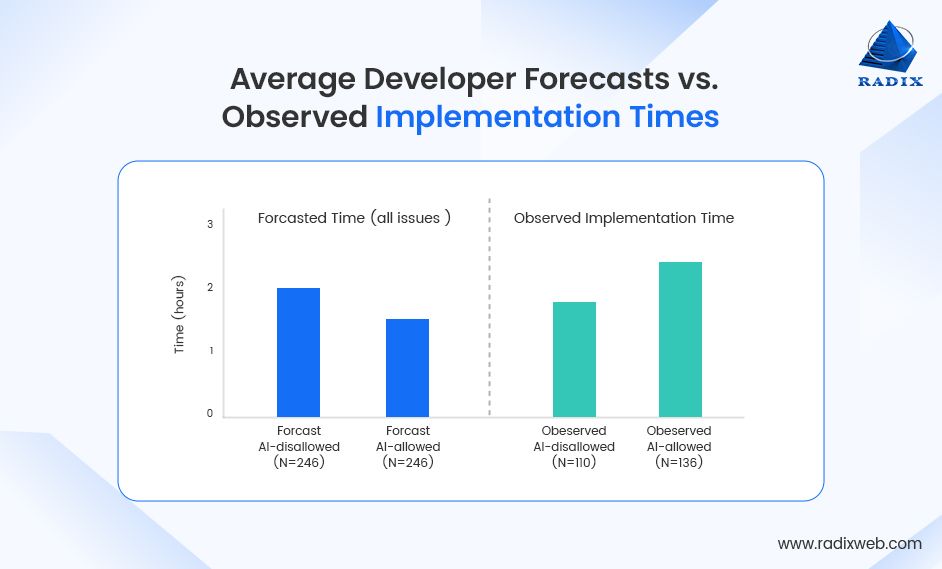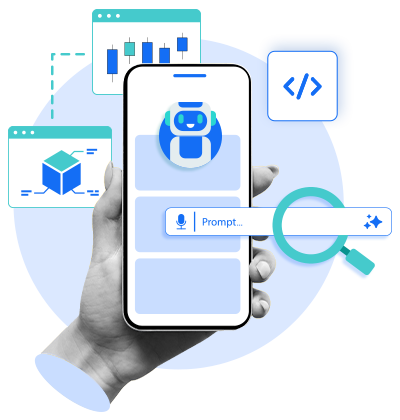Read More

Skip Setup Headaches and Start Your Project Fast - Download Free Boilerplates
ON THIS PAGE
Summary: Endless promoting in AI-assisted coding (called doomprompting!) traps teams in cycles of curiosity without results. I’ve spoken to multiple clients across domains who have suffered due to this perfection-seeking prompting that drains enterprise value. How can you avoid it? How can you unlocks real enterprise value with AI? I explain all that and more below.
We’ve all done it... scrolling an endless feed of updates, opinions, and distractions. That’s doomscrolling. You leave the screen not wiser, but oddly drained.
The same pattern is now emerging in organizations using AI. Teams feed prompt after prompt to an AI coding assistant. Yet, organizations often find that effort escalates without delivering meaningful results.
This is what is now being labelled ‘doomprompting’.
Doomscrolling wastes minutes. Doomprompting wastes millions.
There are hundreds of use cases of AI with AI-assisted coding being the most prominent. It was introduced to us as the gateway to speed. Instead of writing boilerplate or repetitive logic from scratch, developers could use LLMs to generate it instantly.
But a recent study I came across stated that developers expect AI to boost their productivity by 24%. The reality looks different though. When allowed to use AI, developers took 19% more time to complete their tasks.

The graph shows the expected and actual productivity when developers were disallowed and allowed to use AI tools.
I have also seen this happen in real life with clients who tried AI-assisted coding but couldn’t move from ideas to impact.
The gap reflects a subtle paradox: the pursuit of even better outputs can transform a shortcut into a loop of diminishing returns.
The paradox is striking: the more you prompt, the less progress you make. Instead of speeding up delivery, projects stall. Instead of cleaner code, you just accumulate brittle fragments that require even more human intervention. The silent cost? Burned budgets, delayed launches, and leadership frustration.
That’s doomprompting. It doesn’t look like failure. It feels busy, active, even innovative. But the outcomes are the opposite.
The Dilemma: Curiosity vs. Purpose
In my conversation with business leaders, they often express -- "We want to use AI, but no matter how powerful our AI coding assistant is, it doesn't yield any financial benefits."
"I can't let my team do stuff manually, we have to be AI-first."
"I see everyone on the team using AI and they tell me how fast it can spit out code. Yet, we are facing project delays because our code has bugs, security loopholes, and isn't focused on business goals."
All this makes leaders trust AI less. It is natural to wonder if you should put a stop to this AI experimentation. Or should you wait and hope to finally crack the prompt that drives breakthrough innovation in how you build an AI software?
Well, neither of the extremes work. Ban experimentation, and you choke off creativity and demotivate technical talent. Allow unchecked prompting, and you enable cycles of endless “almost there” results that never land in production.
The truth is that curiosity is not the enemy. Lack of purpose is.
Developers are naturally curious, and AI amplifies that tendency. The problem arises when curiosity is disconnected from clear goals. The energy is high, but direction is missing.
The real dilemma isn’t curiosity versus control. It is curiosity versus purpose. The insight for leaders is that unleashing curiosity without a clear anchor rarely translates into meaningful AI impact.
Solution: Focusing on Purposeful AI Not Perfect Prompting
The most transformative AI projects we’ve worked on at Radixweb, didn’t start with the question, “What can this model do?” They began with, “What business problem are we solving?”
Experience shows that teams achieve greater impact when outputs are evaluated for business readiness, not only technical elegance.

Purposeful AI does not require limiting experimentation or curbing curiosity.
Experimentation still happens, but within guardrails. And this purpose is what turns AI from a toy into a tool.
Leadership’s Role in Breaking the Doomprompting Cycle
AI adoption rarely self-corrects at the developer level. Effective leaders recognize that direction, context, and structure shape outcomes. Purposeful experimentation thrives when curiosity is aligned with enterprise goals, turning AI from a tool of novelty into a lever for meaningful impact.
Here’s what business leaders should be doing to make sure their AI projects don’t end up being a glorified prompting competition.
Step 1: Clarify What “Done” Means
In traditional development, completion is clear. With AI-assisted coding, outputs blur those lines. Leaders need to define production readiness and emphasize business impact over perfection. That’s what helps teams channel experimentation toward results that truly matter.
Step 2: Connect Prompts to Business Outcomes
Not all AI outputs are equal. Strategic leaders need to tie AI exploration to defined business objectives and ensure that curiosity drives ‘value’ rather than ‘distraction’. Every prompt should be a lens for solving a real problem, whether it’s accelerating delivery, reducing rework, or improving customer experience.
Step 3: Measure Impact Over Activity
Productivity is more than just output volume. So, make sure you analyze when AI experimentation reduces the time and resource requirements. Compare that to situations when continuous experimentation becomes a costly cycle. Reflection on these trade-offs guides smarter AI strategy.
Step 4: Balance Freedom with Guardrails
Innovation requires room to explore, but unbounded experimentation can dilute focus. For leaders, this makes setting boundaries essential. You need boundaries that define when iteration serves progress and when it risks inefficiency because that is what helps teams know when to explore, stop, or operationalize.
Also, remember that traditional definitions of speed and security must evolve to reflect the realities of AI-assisted development.
Step 5: Invest in Skills not Just Tools
AI’s potential is realized not by tools alone, but by the judgment of those who wield them. Experience suggests that the greatest impact comes from teams that develop frameworks to interpret outputs and prioritize work that drives meaningful outcomes.
When your team’s curiosity is guided by business purpose, experimentation evolves from just activity into a strategic advantage. As a leader, you need to balance the exploration and outcomes. With that, you’ll see that the AI impact extends beyond technology.
A Note from Our Experiences at RadixwebAt Radixweb, we’ve witnessed AI challenges firsthand. Some enterprises approach us after having wasted months on internal AI trials. They often have clever demos and fancy frontends, but the business benefits seem to be missing. Their first projects end up having an AI tag just for the sake of it, with none of the benefits of AI.In our AI consulting sessions, we help you understand whether you really need AI-first solutions. We re-architect your systems so that AI can be implemented at scale, not just as an afterthought.The difference is simple: purpose over prompting. Once clarity of purpose is established, the endless cycles vanish. AI becomes part of the product, not just part of the experiment.Are you also stuck in a doomprompting cycle? Schedule a strategy session with our AI consultants to see how you can break free from that and go from ideas to market impact.
Ready to brush up on something new? We've got more to read right this way.







